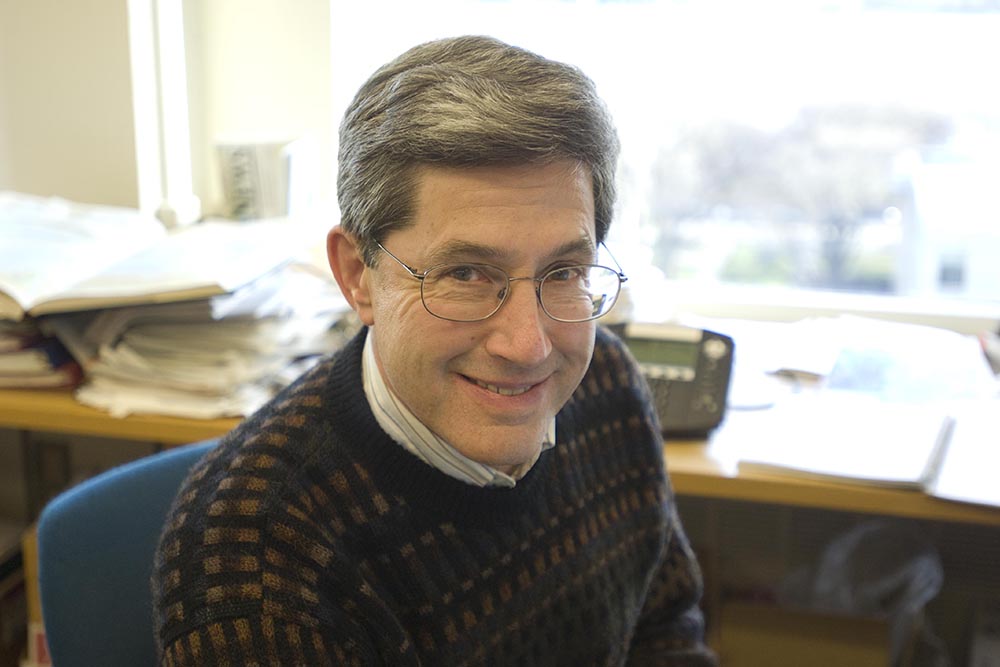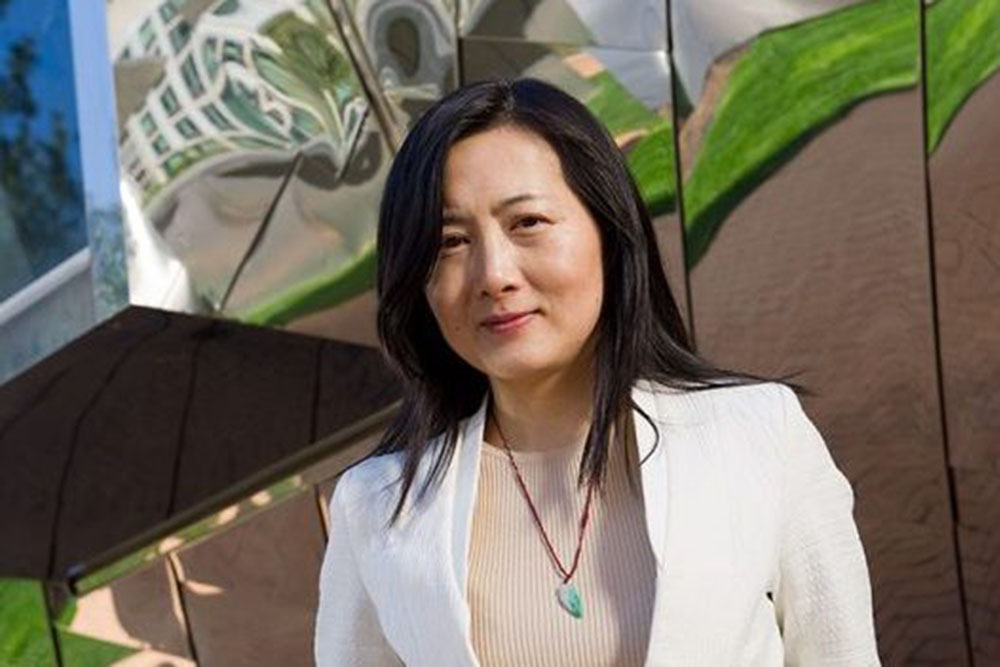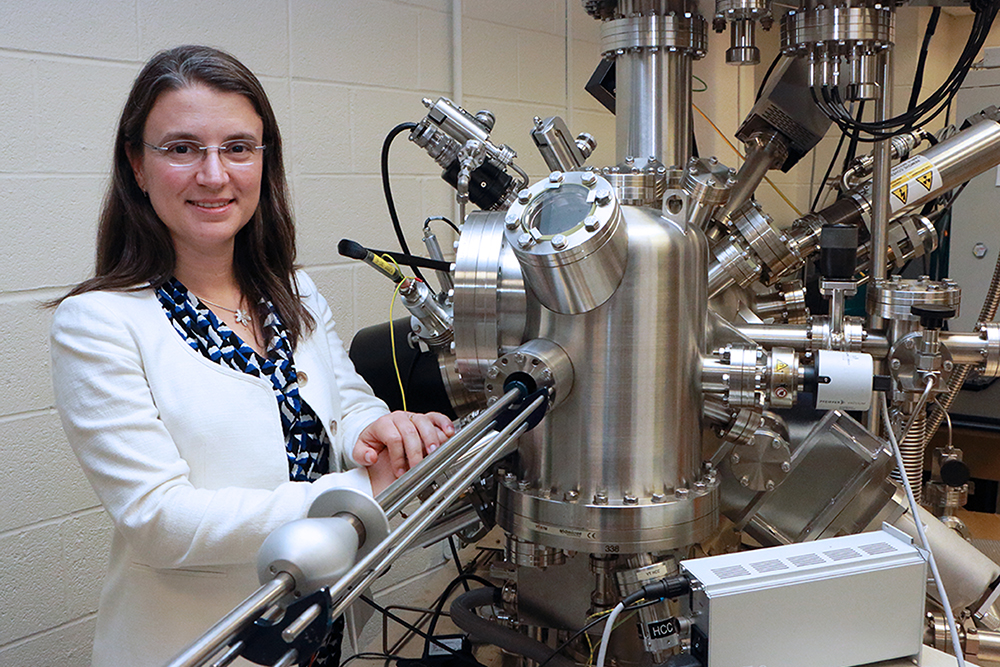
Over the past year, the MIT Energy Initiative (MITEI) has spearheaded the launch of eight Low-Carbon Energy Centers, each one dedicated to advancing research in a technology area critical to addressing climate change. The directors of three of these centers—those focused on carbon capture, utilization, and storage; energy storage; and materials in energy and extreme environments—discussed their vision for transforming the energy system.
Center for Carbon Capture, Utilization, and Storage
There is a fundamental incompatibility, at least for the next several decades, between the need to improve the standard of living of people in developing countries and the desire to keep fossil fuels in the ground. We could resolve this incompatibility by using the energy stored in fossil fuels while returning the associated carbon dioxide to the subsurface. This is unlikely to happen without innovation in capturing, utilizing, and storing carbon—innovation that MIT can and should provide!
 Bradford H. Hager, Cecil and Ida Green Professor of Earth Sciences. Photo: Patrick Gillooly, MIT |
 T. Alan Hatton, Ralph Landau Professor of Chemical Engineering Practice. Photo: Stu Rosner |
Why is research in carbon capture, utilization, and storage critical to meeting the world’s low-carbon goals?
Every year, human activities emit more than 40 billion metric tons of carbon dioxide (CO2) into the atmosphere, and the release of CO2 from fossil fuel combustion is still on the rise. In the past 50 years, concentrations of CO2 in the atmosphere have increased 25%.
Carbon capture, utilization, and storage hold great promise for ameliorating the effects of excess emissions by capturing CO2—particularly from industrial operations and power facilities—converting some of this CO2 into useful products, and storing what is not used safely and securely. Unfortunately, today’s carbon capture techniques are energy-intensive and expensive at over $50 per metric ton of CO2 avoided—and most carbon use and storage efforts are as yet only employed at small scales. Research is needed to discover and demonstrate more efficient capture technologies, to secure long-term storage solutions, and to identify additional carbon storage methods.
How will the new Center for Carbon Capture, Utilization, and Storage overcome the major barriers to progress?
Scaling up affordable technologies for carbon capture, utilization, and storage will require a wide range of expertise—from novel chemistry, biology, and engineering for capture to subsurface science and engineering at field scale for storage. The new MIT Energy Initiative center is developing, tracking, and assessing methods that can reduce the carbon costs of meeting the world’s energy needs by tapping into MIT’s extensive existing research capability in such areas as molecular simulation; materials design; separation and catalytic processes; fluid mechanics; seismic, geodetic, and electromagnetic imaging; and systems analysis.
Center faculty will also team up with representatives from a diverse set of global businesses, government entities, and organizations that face carbon capture, utilization, and storage challenges to ensure MIT’s experts are engaged with the most pressing real-world needs in these areas.
What kind of research is currently under way at the center?
The Center for Carbon Capture, Utilization, and Storage supports a solutions-focused portfolio of projects ranging from molecular simulation to materials design to systems analysis.
Examples of carbon capture research under way at MIT include electrochemically mediated amine regeneration, an improved technique for capturing CO2 from coal-fired power plant flue gas, and the development of metal oxide covalent network ultrathin films, which have the potential to separate larger quantities of carbon at much lower temperatures than membrane materials currently under consideration for scrubbing smokestack emissions.
Within the area of CO2 reduction and utilization, the center is working on converting CO2 into fuels using a strategy that emphasizes the bottom-up, molecular-level engineering of functional inorganic interfaces with a focus on electrochemical energy conversion. MIT researchers are also exploring ways to fix CO2 biologically, for example by converting CO2 into carbonates that can be used as building material.
Much of MIT’s carbon storage research focuses on storing compressed CO2 in porous underground formations such as saline aquifers. MIT experts are applying theoretical, computational, experimental, and field observation approaches to bring this option to scale and to demonstrate that storage can be accomplished safely and securely.
Energy Storage Research Center
The problems we face in energy storage are too important, the need for solutions too urgent, and the hurdles to be overcome too challenging to solve within a single research group or traditional industry-academic partnership. Sustained science and engineering is needed for this research to facilitate the transition to a carbon-neutral energy landscape. The Energy Storage Research Center at MITEI enables a truly accelerated pace of innovation through highly cross-disciplinary collaboration.
 Jeffrey Grossman, Morton and Claire Goulder and Family Professor in Environmental Systems and professor of materials science and engineering. Photo: M. Scott Brauer |
 Yang Shao-Horn, W.M. Keck Professor of Energy, professor of materials science and engineering, and professor of mechanical engineering. Photo: Stuart Darsch |
How can improvements in energy storage help the world reach its goal of reducing carbon emissions?
There is a critical need for storage because the most abundant sources of carbon-free energy, wind and solar, generate power intermittently. Yet today, storage options are so limited that even if solar cells were free, only 10% of Americans could take advantage of them because the electric grid can’t accommodate more intermittent energy. In fact, today the only carbon-free system that is cost-competitive with the grid and capable of storing energy at scale is hydropower.
Storing energy electrochemically shows enormous promise but to date has proved practical primarily at small scales. Electric vehicles, cell phones, and other consumer electronics thus remain limited by battery life (governed by energy storage density). In fact, the primary reason current power generation and transportation systems rely so heavily on fossil fuel–based technologies is because of the high-density, fuel-level energy storage that these options provide.
Making the transition to a low-carbon future therefore requires the development of new storage technology options—ones that can combine technical performance with costs low enough to make them attractive for use in renewables-heavy electricity systems and in electricity-powered transportation, communications, and other applications.
How will the new Energy Storage Research Center address the major challenges in this area?
What is needed is a game-changer—storage that works over time scales ranging from milliseconds to months, with different combinations of power delivery and energy capacity, and a full range of volumetric and gravimetric characteristics.
The Energy Storage Research Center will draw on cross-disciplinary research in engineering, science, and policy as well as real-world input from stakeholders in industry, government, and nongovernmental organizations to hasten the development of new energy storage technologies with the technical performance and cost characteristics needed to provide power sustainably at any place, at any scale, and at any time.
What kind of research is currently under way at the center?
The research portfolio at the center will mirror the wide variety of energy storage needs that must be addressed to enable greater deployment of renewables in the power sector and more extensive electrification of mobility. Examples include developing new lithium-ion and sodium-ion battery materials with increased storage capacity and fuels that can store solar energy as usable, distributable, on-demand chemical energy.
In addition, researchers are investigating myriad ways to control, synthesize, and characterize materials at the atomic and nanometer scales—work that will facilitate the design of new materials for storage applications. Work already under way at MIT includes the synthetic design of small molecules for flow batteries; the development of polymers and ceramics for new and fast ion conduction; and the design of new electrodes using self-assembly of nanomaterials by electrostatics and biological-templated assembly. Researchers are also designing new catalysts and electrodes using computational and experimental methods as well as developing solid-state batteries and model systems for energy storage using chemical vapor deposition, pulsed laser deposition, and molecular beam epitaxy.
Center researchers are also developing theories and leveraging new computational capacities to accurately describe the fundamental processes involved in energy storage—critical steps to addressing the storage challenge.
Center for Materials in Energy and Extreme Environments
Engaging with industry is our key mission, and we would love to send MIT faculty to representative companies in each sector—including oil and gas; utilities; chemicals, metals, and construction materials; automotive; and aerospace—to observe plant operations and challenges, and help define research projects.
 Ju Li, Battelle Energy Alliance Professor of Nuclear Science and Engineering. Photo: Justin Knight |
 Bilge Yildiz, associate professor of nuclear science and engineering and of materials science and engineering. Photo: Denis Paiste, MIT |
Why are materials an important component of energy research, and how can new and advanced materials help reduce global carbon emissions?
Materials are fundamental to the success of a wide range of energy-related activities from oil and gas exploration to nuclear power generation and from wind power to synthetic fuel production. Stakeholders from virtually every industry ask the same questions: What are the performance limits of the materials? How much do they cost? How long will they last? How much do we need, and how difficult will these materials be to produce, transport, and dispose of?
Such questions are particularly critical in the extreme environments that characterize energy industries. Ball bearings in wind turbines are subjected to extreme dynamic mechanical loads; nuclear fuel cladding needs to tolerate radiation; oil and gas infrastructures are aged by corrosion and fouling; solar concentrators and fuel cells suffer damage from high temperatures; and solar fuels production suffers from dissolution or corrosion in aggressive chemical environments.
The development of low-cost, high- performance, and durable materials promises to improve the safety and economy of many energy production, conversion, and transmission activities while reducing carbon emissions and other environmental impacts.
How will the Center for Materials in Energy and Extreme Environments help move us toward a low-carbon future?
The center works to develop new materials, processes, diagnostics, and software with the goal of improving the economy and efficiency of materials while reducing their carbon emissions and other environmental impacts. One key objective is to devise innovative materials solutions to improve performance and reduce the CO2 footprint of existing energy technologies. Another is to provide the innovative functional and structural materials needed to enable and enhance new energy technologies. Take the hydrogen economy as an example: The entire value chain, from the production of hydrogen, to storage and transportation infrastructure, to hydrogen fuel cells requires advanced materials that fall into the purview of our center.
Center research focuses on advancing technologies based on fundamental scientific breakthroughs that enhance materials performance and predict and mitigate bulk and surface damage in complex environments that include combined effects of electrochemistry, temperature, and mechanical loads. Materials selection and design is a big part of the center’s activities.
Can you provide some examples of research currently under way at the center?
The center takes a three-pronged approach to research, simultaneously working to develop new materials and interfaces; characterize the chemical, mechanical, and physical behavior of materials at both the micro and macro scale; and enhance materials performance and life in a given environment.
Already, MIT researchers have made significant progress in the development of such new materials as nanocomposites and graded surfaces, which hold the promise of being stronger, tougher, and more tolerant of corrosion, radiation, and high temperature than anything now available. Center researchers are also engineering new catalysts in the hopes of emulating the reactivity of natural enzymes at milder temperatures than traditional synthetic catalysts, thus improving their activity. Another example is using elastic strain engineering to design materials structures with finite residual stress to guide interactions with ions, electrons, photons, etc., to improve (for example) the performance of superconductor cables and power electronic components for electrical energy transmission as well as fuel cells and electrolyzers for energy conversion.
At the same time, the center is investigating major materials performance issues such as hydrogen embrittlement, stress corrosion cracking, and materials fouling. In the United States alone, the trouble caused by materials fouling—such as clogged pipes and component failures—costs industry more than $15 billion a year in degraded energy system performance. MIT’s research into how fouling occurs and how the process can be detected and disrupted thus holds obvious potential benefits. Such work is just the tip of the iceberg: Advances in how materials are designed and used will ultimately impact the full spectrum of energy research needed to meet low-carbon objectives.
This article appears in the Autumn 2016 issue of Energy Futures.